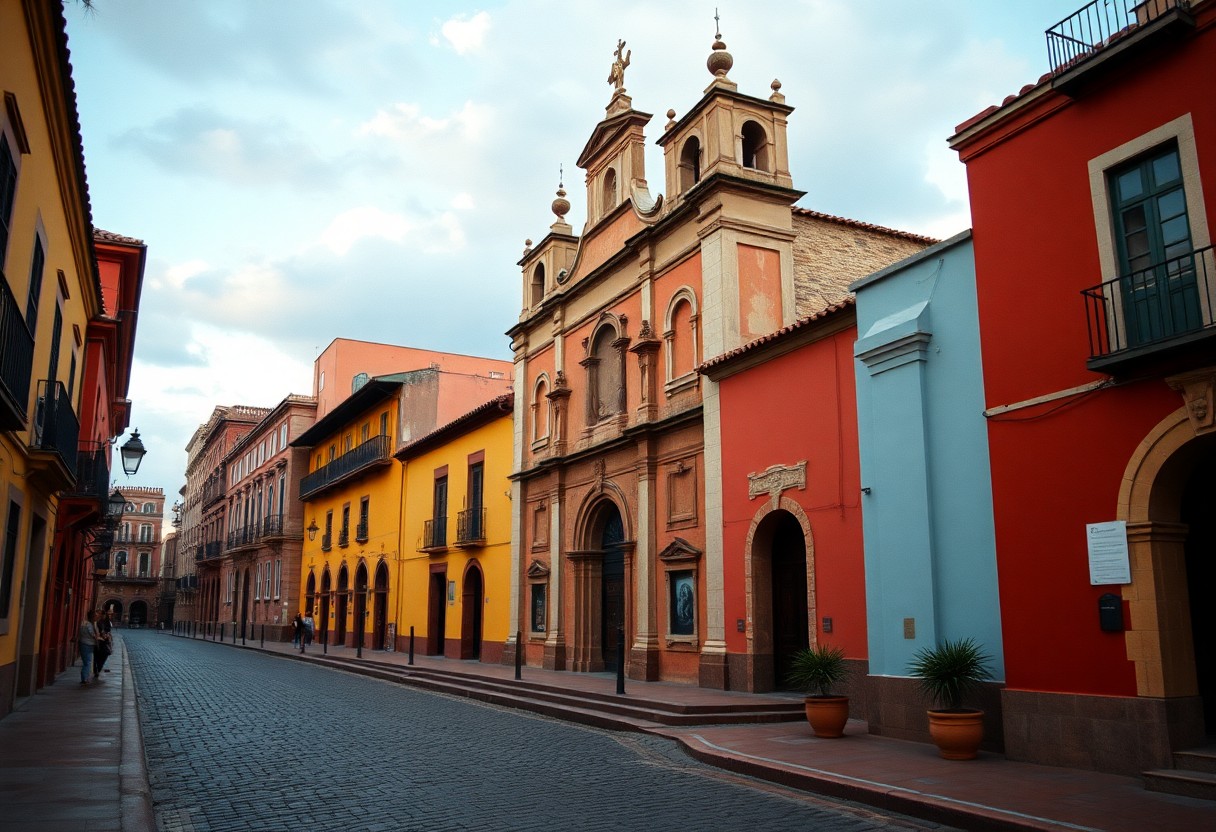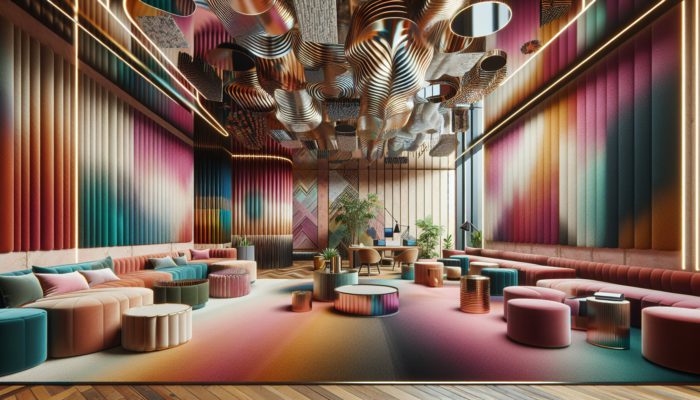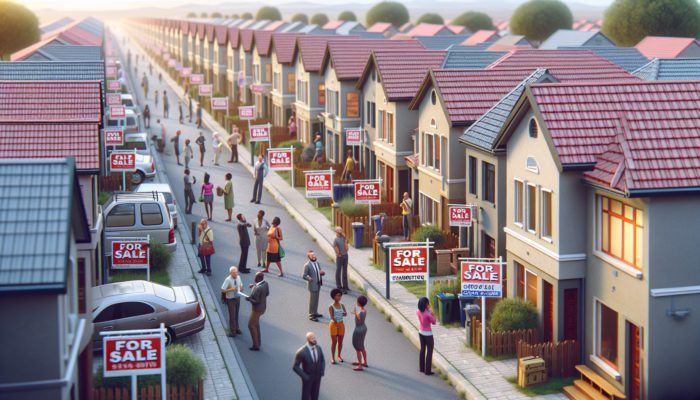In 2008, UNESCO recognized San Miguel de Allende as a World Heritage Site, celebrating its remarkable cultural significance. This enchanting city is a breathtaking example of Spanish colonial architecture intertwined with vibrant artistic traditions, beautifully situated in the scenic central highlands of Mexico. Founded in 1542 by Franciscan monks, San Miguel has evolved from a key location in the Mexican independence movement into a globally recognized cultural center. As you stroll through its charming cobblestone streets and explore its well-preserved historic center, you will encounter a living testament to Mexico’s rich architectural and cultural heritage, solidifying its reputation as one of the most captivating historical landscapes in the Americas.
Immerse Yourself in the Rich Pre-Colonial and Indigenous Heritage of San Miguel de Allende
The region of San Miguel de Allende was originally inhabited by various indigenous groups, and its pre-colonial history unveils a complex tapestry of cultural interactions. The area primarily housed the Chichimeca and Otomi peoples, who developed sophisticated societies long before the arrival of the Spanish. Their strategic settlements in this mountainous region reflect incredible adaptability to the challenging environmental conditions, establishing a strong foundation for the area's cultural evolution. By delving into the history of these early inhabitants, you can fully appreciate how their legacy continues to influence the region's identity and traditions today.
Discover the Early Settlements and Inhabitants of San Miguel de Allende
Archaeological evidence indicates that indigenous communities in San Miguel de Allende established intricate social structures between 500-1000 CE. These early residents carefully selected locations with natural defensive advantages, resulting in the establishment of settlements designed to protect against invasions while providing sustainable agricultural opportunities. Their foresight and resource management fostered vibrant communities that thrived in this dynamic environment. The resilience and innovation of these initial settlers laid the groundwork for the region's historical trajectory and cultural richness, highlighting the importance of understanding their contributions to contemporary society.
Explore Cultural Practices and Traditions of Indigenous Peoples
Prior to the arrival of the Spanish, indigenous societies engaged in complex religious ceremonies and agricultural rituals. Their spiritual beliefs were intricately connected to natural cycles, with elaborate ceremonies dedicated to agricultural deities and celestial movements. Central to these practices were sophisticated agricultural techniques, which enabled these communities to thrive despite the harsh terrain. Their deep understanding of local ecosystems, advanced irrigation methods, and crop rotation practices facilitated sustainable food production and community resilience, underscoring their profound relationship with the land. This rich agricultural mastery included innovative strategies that optimized resource utilization, ensuring each community could flourish and fostering a sense of identity and cultural continuity through generations.
Recognize the Influence of Indigenous Languages on Cultural Identity
Among the diverse indigenous groups, Otomi and Chichimeca languages played a significant role in daily communication. These languages served not only as tools for communication but also as intricate cultural expressions that reflect complex social relationships and worldviews. The linguistic heritage of San Miguel de Allende represents a profound repository of cultural knowledge, preserving an intricate understanding of local ecosystems, medicinal practices, and social structures. This linguistic diversity acts as a living archive of wisdom that transcends mere verbal exchange, emphasizing the importance of preserving these languages to maintain cultural identity and continuity. By recognizing the significance of these languages, we can better understand the community's rich heritage and ongoing legacy.
These languages encapsulated rich narratives and traditions that shaped the community’s relationship with their environment. Therefore, the preservation of these languages is essential for sustaining cultural identity and continuity, showcasing the enduring legacy of the region's indigenous roots and enriching its multicultural tapestry.
Delve into the Historical Significance of the Spanish Colonial Era in San Miguel de Allende
San Miguel de Allende emerged as a pivotal Spanish colonial settlement in the early 16th century, fundamentally altering the landscape of New Spain. The region became a crucial site for Spanish conquistadors, establishing a multifaceted administrative and cultural framework that would influence the city’s development for centuries. By exploring this period, you will uncover the profound impact of colonial governance on indigenous populations and territorial expansion, shaping the socio-political landscape of the area and providing insights into the complexities of colonial interactions.
Trace the Foundation of San Miguel de Allende and Its Strategic Importance
In 1542, Friar Juan de San Miguel established the settlement in the fertile valleys of central Mexico, thoughtfully selecting a location that would evolve into a significant administrative centre. This pivotal moment highlights the strategic importance of establishing a Spanish presence in the region, creating a hub for cultural exchange and territorial control that would have lasting implications for the area's development and influence. The establishment of San Miguel marked the beginning of a new era, where diverse cultures would intersect and transform the local landscape.
Evaluate Architectural Developments and Innovative Urban Planning in San Miguel de Allende
The urban landscape of San Miguel de Allende epitomizes the elegant Spanish colonial architectural style. You will discover how baroque and neoclassical influences reshaped the city’s built environment, resulting in a harmonious blend of European design principles and local craftsmanship. This architectural evolution not only enhanced the aesthetic appeal of the city but also fulfilled functional purposes, ensuring that structures met the needs of a growing populace. The artistry and intricacy of these buildings reflect a rich cultural heritage that continues to inspire awe.
Central to the architectural growth of San Miguel de Allende were the meticulous urban planning strategies that prioritized aesthetic and functional considerations. The city's layout, characterized by wide streets, central plazas, and impressive ecclesiastical and governmental buildings, exemplifies a sophisticated approach to urban design that seamlessly integrates beauty with practical infrastructure. This urban planning laid the groundwork for a vibrant civic life that continues to thrive today, reflecting the city's historical depth and community spirit.
Discover Economic Growth and Agricultural Practices During the Colonial Period
The colonial period saw significant advancements in agriculture and trade, establishing San Miguel de Allende as a crucial economic hub. You will learn how silver mining, textile production, and agricultural exports propelled the city’s prosperity and regional prominence, positioning it as a key player in the broader economic landscape of New Spain. These industries not only supported the local economy but also connected San Miguel to national and international markets, fostering growth and innovation.
Consequently, San Miguel de Allende’s economic landscape expanded dramatically, fostering complex trade networks that connected local producers to wider regional and international markets. The diversification of economic activities, including agriculture, mining, and artisanal production, created a robust economic ecosystem that sustained the city's growth and development throughout the colonial era, contributing to its historical significance and economic resilience.

Uncover San Miguel de Allende's Role During the War of Independence
Your exploration of San Miguel de Allende during the independence era unveils a crucial chapter in Mexican history. In the early 19th century, the town emerged as a significant battleground where colonial resistance and revolutionary fervor converged. Its strategic location and passionate inhabitants transformed it from a tranquil colonial settlement into a hotbed of revolutionary activity, illustrating the dynamic interplay of historical forces at work during this pivotal period.
Highlight Key Figures in the Independence Movement and Their Impact
Any investigation into San Miguel’s independence narrative must underscore the contributions of local heroes, particularly Ignacio Allende, a native son who played a pivotal role in challenging Spanish colonial rule. His strategic thinking and unwavering commitment to liberation inspired many townspeople to join the revolutionary cause, establishing San Miguel as a critical launching point for the independence movement and a symbol of resistance. His legacy continues to resonate in the hearts of the community today.
Analyse Major Events and Battles That Shaped the Area's Revolutionary History
San Miguel de Allende was the backdrop for significant battles that marked pivotal moments in Mexico’s struggle for independence. The town witnessed intense military confrontations between insurgent forces and Spanish troops, with local fighters demonstrating remarkable bravery and strategic acumen in their quest for national sovereignty. The region’s geographical advantages allowed revolutionary leaders to coordinate complex military operations, effectively disrupting Spanish colonial control and altering the course of history.
As you delve deeper into the independence narrative, you will discover that numerous strategic military engagements occurred in and around San Miguel de Allende, significantly influencing the region’s revolutionary trajectory. Insurgent forces adeptly utilized the local terrain to their advantage, showcasing their tactical prowess and determination in the face of colonial opposition, ultimately contributing to the birth of a new nation.
Assess the Aftermath and Its Lasting Impact on the Town’s Development
The struggle for independence left an indelible mark on San Miguel’s community, profoundly transforming its social and physical landscape. The conflict dismantled existing power structures, challenged colonial hierarchies, and ignited a renewed sense of national identity among residents who fought passionately for liberation. This transformative period reshaped local demographics and economic frameworks, influencing the city’s future development and collective memory.
The aftermath of the revolutionary period introduced significant social mobility, empowering local populations while paving the way for urban development. Economic disruptions caused by prolonged conflict were gradually rectified as the town embraced its new national identity, leading to the revitalization of infrastructure and the establishment of innovative community structures that nurtured growth and resilience.
Understand the Complexities of the French Intervention and Its Effects
The French intervention in Mexico is often viewed as a transformative period for San Miguel de Allende. This conflict, lasting from 1861 to 1867, profoundly affected the city’s social and political landscape. The French invasion, supported by European powers, challenged Mexico’s sovereignty and caused significant disruption to local communities, introducing complex geopolitical dynamics that would shape the region's future.
Investigate the Role of San Miguel de Allende in the Resistance Against French Forces
Following the entry of French troops into Mexico, you will observe that San Miguel de Allende became a strategic location for resistance movements. Local patriots actively opposed foreign intervention, providing support to national defense efforts and sheltering revolutionary fighters. The city emerged as a symbolic center of Mexican resistance against imperial ambitions, embodying the spirit of defiance that characterized the era and inspiring future generations to uphold their sovereignty.
Examine Changes in Governance and Society During the Intervention
The French intervention triggered significant administrative restructuring in San Miguel de Allende, leading to profound shifts in local governance. New political structures emerged, fundamentally challenging traditional power dynamics during this tumultuous period. This intervention catalyzed comprehensive societal transformations, reshaping social hierarchies and introducing new economic models that would alter the city’s developmental trajectory for generations to come, paving the way for a more equitable society.
Explore Cultural Shifts Resulting from Foreign Influence on San Miguel de Allende
Before the intervention, San Miguel de Allende maintained a relatively insular cultural environment. However, European interactions during this time introduced novel artistic, architectural, and intellectual perspectives that gradually transformed the city’s cultural landscape. The infusion of new ideas and practices reshaped local traditions, creating a unique hybrid cultural identity that would define San Miguel in the years to come, enriching its artistic and intellectual milieu and broadening its creative horizons.
As a result of the French intervention, a complex cultural exchange emerged, profoundly influencing San Miguel de Allende. The city began to incorporate European aesthetic sensibilities, educational practices, and technological innovations, enriching its cultural tapestry and fostering a dynamic environment for creative expression and cultural dialogue.
Analyse the Transformative Changes in San Miguel de Allende Throughout the 19th Century
Throughout the 19th century, San Miguel de Allende underwent a profound metamorphosis that reshaped its social, economic, and political landscape. This period marked a critical turning point in the city’s history, transitioning from a colonial outpost to a more dynamic urban center with increasing national significance. The changes during this time laid the groundwork for the city’s vibrant modern identity, reflecting its resilience and adaptability in the face of change.
Assess Industrialization and Urban Development in the 19th Century
The emergence of new economic activities and infrastructure transformed San Miguel de Allende’s urban landscape significantly. You would observe remarkable industrial advancements that introduced textile mills, manufacturing facilities, and improved transportation networks, gradually modernizing the city’s economic structure and physical environment. These developments paved the way for increased economic activity and a more interconnected community, stimulating growth and innovation while enhancing the quality of life for its residents.
Investigate Changes in Demographics and Migration Patterns During the 19th Century
Alongside economic shifts, significant demographic transformations occurred during this time. Population dynamics began to evolve, marked by increased internal migration and the arrival of new settlers eager to seize economic opportunities in the burgeoning urban landscape. This influx of people contributed to a complex demographic reconfiguration, enriching the city’s social fabric and cultural diversity, ultimately creating a more vibrant and inclusive community.
As San Miguel de Allende progressed through the 19th century, rural populations migrated to the city, bringing diverse skills and cultural backgrounds. The integration of indigenous communities, mestizo populations, and emerging middle-class groups resulted in a more heterogeneous social composition, fundamentally altering the city’s social structure and enhancing its cultural richness and vibrancy.
Explore San Miguel de Allende's Role in National Politics During the 19th Century
San Miguel de Allende’s political significance became increasingly evident during this transformative period. The city emerged as a critical political hub in regional and national movements, with local leaders playing influential roles in broader Mexican political discourse. This era saw the city contributing substantially to national conversations about identity and governance, showcasing its active engagement in shaping the country's future and the ideals of democracy.
San Miguel de Allende became a vital centre for political action during Mexico’s turbulent independence and reform periods. Understanding the influential political figures and intellectual movements that originated from this city deepens your appreciation for its contributions to the national narrative, illustrating how local dynamics can shape broader historical trajectories and political outcomes.
Celebrate the Cultural Flourishing of San Miguel de Allende in the 20th Century
Despite facing economic challenges, San Miguel de Allende experienced a remarkable cultural renaissance during the 20th century. You will discover how the city evolved from a quiet colonial town into a vibrant artistic hub, attracting creative minds from around the globe. The arrival of international artists, writers, and intellectuals revitalized its historic streets, establishing San Miguel as a significant cultural destination that ultimately earned UNESCO World Heritage status, reflecting its artistic legacy and cultural vibrancy.
Understand the Arrival of Artists and Intellectuals in San Miguel de Allende
To appreciate San Miguel’s artistic evolution, consider how creative individuals were drawn to its unique charm. Renowned artists and writers recognized the city’s magical atmosphere, viewing it as a sanctuary for creative expression. The town’s colonial architecture, vibrant colors, and welcoming community became an irresistible magnet for international talents seeking inspiration in a new cultural landscape, fostering a thriving arts scene that continues to flourish.
Examine the Formation of Art Institutions and Workshops in San Miguel de Allende
An extraordinary transformation occurred with the establishment of groundbreaking art institutions. The Instituto Allende and other art schools became pivotal in fostering a robust artistic ecosystem. These institutions provided spaces for learning, collaboration, and artistic development, attracting students and professionals from diverse backgrounds eager to engage with the local culture and artistic traditions.
Furthermore, these art institutions played a crucial role in preserving and promoting traditional Mexican artistic techniques. They offered comprehensive programs in painting, sculpture, ceramics, and other visual arts, ensuring that both local and international artists could refine their skills within a rich, supportive environment. Workshops became hubs of cultural exchange and artistic innovation, further enhancing the city’s creative landscape and contributing to its vibrant cultural identity.
Explore the Impact of the Mexican Revolution on San Miguel de Allende
The Mexican revolutionary movements profoundly influenced San Miguel’s cultural landscape. You will observe how political changes ignited artistic expressions and social transformations. The city emerged as a symbolic space for revolutionary ideals, with artists and intellectuals utilizing their creative platforms to explore themes of social justice and national identity, reshaping the cultural narrative of the time and inspiring future generations.
Artists and intellectuals who arrived in San Miguel during and after the revolution brought powerful narratives of social change. They transformed the city into a dynamic cultural laboratory, where artistic expression became a powerful means of exploring national identity, social struggles, and cultural heritage. Their contributions reshaped San Miguel’s intellectual and artistic discourse, establishing it as a significant center for creative and political dialogue.
Experience San Miguel de Allende as a Thriving Expat Haven
San Miguel de Allende has evolved into a magnetic destination for international artists, retirees, and creative professionals. You’ll find a vibrant expatriate community drawn to its colonial charm, affordable living, and rich cultural landscape. The city’s warm atmosphere and artistic heritage have made it a global hotspot for those seeking a fresh start beyond their original borders, fostering a diverse and inclusive environment that celebrates creativity.
Observe the Rise of the Expat Community in San Miguel de Allende
Amid traditional Mexican life, an international community began to take root. You’ll discover that artists from the United States, Canada, and Europe were initially attracted by the Instituto Allende and the city’s burgeoning artistic reputation. Their arrival gradually transformed San Miguel’s demographic landscape, creating a unique blend of local and international cultures that enriched the community's social tapestry and fostered cultural exchange.
Investigate Cultural Exchange and Influence Through Expatriates
By integrating into the local community, expatriates brought transformative perspectives. You’ll notice how they contributed to artistic workshops, language exchanges, and cultural events that enriched San Miguel’s social fabric. Their presence fostered a dynamic environment of mutual learning and appreciation, enhancing the cultural richness of the city and encouraging collaboration between locals and newcomers.
This cultural interchange transcended superficial interactions. Expatriates actively engaged with local traditions, supporting artisan markets, participating in festivals, and learning Spanish. They became integral contributors to San Miguel’s social ecosystem, helping preserve traditional crafts while introducing global perspectives that further diversified the city’s cultural offerings and livelihood.
Analyse the Economic Implications of Expatriation on San Miguel de Allende
For San Miguel, the influx of expatriates represented significant economic opportunities. You’ll see how foreign residents stimulated real estate markets, established service industries, and brought substantial investment into the local economy. The economic impact of expatriates extended far beyond direct financial contributions.
They established businesses, opened galleries, restaurants, and language schools, creating employment opportunities for local residents. Their entrepreneurial spirit transformed San Miguel into a thriving international hub, attracting global attention and diversifying the city’s economic landscape while fostering local growth and community development, ultimately benefiting all residents.
Examine Architecture and Preservation Efforts in San Miguel de Allende
The architectural elements of San Miguel de Allende reflect a stunning blend of colonial Spanish and indigenous Mexican design. You’ll discover a remarkable preservation of baroque, neoclassical, and Mexican baroque architectural styles that define the city’s unique visual character. The community's commitment to maintaining its historical aesthetic has been vital in achieving its UNESCO World Heritage Site recognition, ensuring that visitors can experience an authentic glimpse into Mexico’s rich architectural heritage and historical journey.
Identify Notable Historical Buildings and Their Cultural Significance
At the heart of San Miguel de Allende stand iconic structures that narrate the city’s historical journey. You’ll be captivated by the Parroquia de San Miguel Arcángel, a pink-stone church with its distinctive neo-gothic facade, and the Instituto Allende, a former hacienda transformed into a cultural center. These buildings represent more than architectural marvels; they embody the city’s cultural evolution and artistic spirit, serving as vital landmarks in its historical narrative and community pride.
Explore Restoration Projects and Community Involvement in San Miguel de Allende
San Miguel de Allende has developed community-driven restoration initiatives aimed at careful preservation over decades. You’ll find local artisans, historians, and residents actively participating in maintaining the city’s architectural integrity. These collaborative efforts ensure that historical buildings are not only preserved but continue to serve modern community needs, balancing the past with contemporary requirements for functionality and cultural relevance.
Moreover, the restoration projects extend beyond mere structural repairs. You’ll witness comprehensive approaches that include training local craftsmen in traditional building techniques, documenting architectural histories, and creating sustainable conservation models. These initiatives not only protect physical structures but also preserve cultural knowledge and skills passed down through generations, ensuring that the spirit of San Miguel endures and flourishes.
Evaluate Challenges in Conservation Efforts in San Miguel de Allende
Every preservation effort faces complex challenges in balancing historical authenticity with modern development. You’ll encounter ongoing debates about maintaining architectural integrity while accommodating urban growth. Limited funding, environmental factors, and the delicate nature of historical structures pose significant obstacles to conservation efforts, requiring innovative solutions and










Leave a Reply